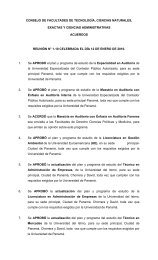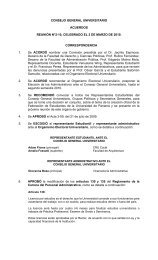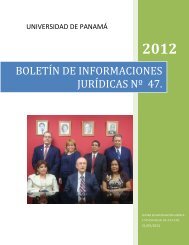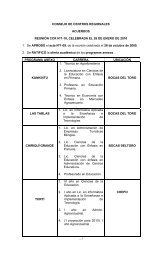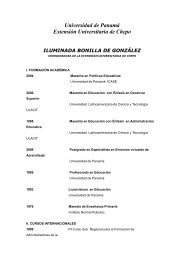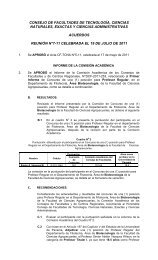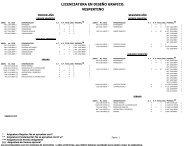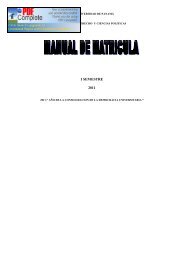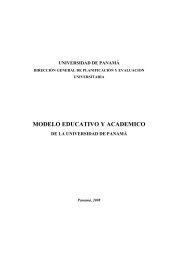Cuál es el origen de nuestro campo magnético?.
Cuál es el origen de nuestro campo magnético?.
Cuál es el origen de nuestro campo magnético?.
Create successful ePaper yourself
Turn your PDF publications into a flip-book with our unique Google optimized e-Paper software.
En lugar <strong>de</strong> un <strong>de</strong>caimiento exponencial como <strong>el</strong> <strong>de</strong> la figura N° 4,<br />
Humphreys supone una historia diferente para <strong>el</strong> CMT. En la figura<br />
No. 5, se mu<strong>es</strong>tra la evolución d<strong>el</strong> <strong>campo</strong> <strong>magnético</strong> según <strong>el</strong><br />
“Decaimiento Dinámico”. Este diagrama no <strong>es</strong>tá a <strong>es</strong>cala ni incluye<br />
todas las reversion<strong>es</strong>, pero ilustra <strong>el</strong> comportamiento general d<strong>el</strong><br />
<strong>campo</strong>.<br />
114<br />
Intensidad<br />
Creación<br />
Reversion<strong>es</strong><br />
fluctuacion<strong>es</strong><br />
Diluvio<br />
Cristo<br />
“ Decaimiento libre”<br />
Pr<strong>es</strong>ente<br />
Fig. 5. Evolución d<strong>el</strong> <strong>campo</strong> <strong>magnético</strong> según <strong>el</strong> mod<strong>el</strong>o <strong>de</strong> Russ<strong>el</strong><br />
Humphreys.<br />
Cuando se constituye <strong>el</strong> planeta, las corrient<strong>es</strong> internas d<strong>el</strong> núcleo<br />
generan <strong>el</strong> primitivo CMT. Luego, <strong>de</strong>bido a los efectos inductivo y<br />
r<strong>es</strong>istivo d<strong>el</strong> núcleo, éstas corrient<strong>es</strong> (y <strong>el</strong> <strong>campo</strong> <strong>magnético</strong>) <strong>de</strong>caen<br />
exponencialmente.<br />
Las reversion<strong>es</strong> mostradas en la figura N° 5, se atribuyen a cataclismos<br />
global<strong>es</strong> que afectan <strong>el</strong> núcleo terr<strong>es</strong>tre. Según Humphreys, se trata <strong>de</strong><br />
las causas que originaron <strong>el</strong> “diluvio universal”. Durante <strong>es</strong>te periodo,<br />
se producen reversion<strong>es</strong> caóticas y al azar en <strong>el</strong> <strong>campo</strong> dipolar, con<br />
duracion<strong>es</strong> <strong>de</strong> unas pocas semanas. D<strong>es</strong>pués, habrían fluctuacion<strong>es</strong><br />
<strong>de</strong>bido al movimiento r<strong>es</strong>idual. Pero las reversion<strong>es</strong> y fluctuacion<strong>es</strong> no<br />
cambian <strong>el</strong> patrón <strong>de</strong> <strong>de</strong>caimiento. Así, d<strong>es</strong><strong>de</strong> los tiempos <strong>de</strong> Cristo, <strong>el</strong><br />
CMT continuaría <strong>de</strong>cayendo.<br />
En 1984, Humphreys publica un artículo en que hace prediccion<strong>es</strong><br />
sobre los <strong>campo</strong>s <strong>magnético</strong>s <strong>de</strong> Neptuno y Urano. Utilizando<br />
r<strong>el</strong>acion<strong>es</strong> propias d<strong>el</strong> mod<strong>el</strong>o y parámetros <strong>de</strong> éstos planetas,<br />
Humphreys predijo un Momento <strong>magnético</strong> d<strong>el</strong> or<strong>de</strong>n <strong>de</strong> 10 25 A m 2<br />
para Neptuno y Urano. En 1986 y 1989, <strong>el</strong> Voyager-2 encontró<br />
Ibarra-Durán, A.



